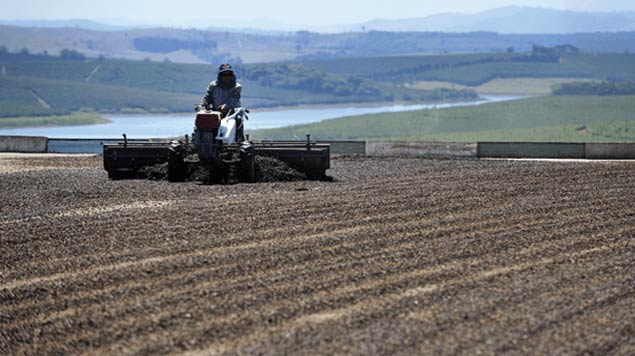Ever since advance warning of cold El Niño winds came out earlier in 2015, the global coffee community has been abuzz with discussions about how to protect coffee crops. What exactly is El Niño anyway? According to the U.S. National Weather Service Climate Prediction Center, it’s a “complex series of climatic changes precipitated by uncharacteristically warm Pacific Ocean water.” Set to begin this winter and extend into spring in the Northern Hemisphere, it’s already earned a frightening name: The Godzilla El Niño.
What will the effects of Godzilla be on coffee crops in general? El Nino can cause any number of extreme weather phenomena, including heavy rains, monsoons, drought, mudslides, hurricanes, or a combination of all, which can cause havoc for important coffee producing regions. The real concern is with the expected duration of the inclement weather, providing little opportunity for crops to recover to normal production levels. Scientists are saying that this may be the strongest El Niño since the 1950s.
Here’s a few things we know: before the heavy rains start, it will be drier in coffee production countries, potentially limiting harvest size in a few areas. This may also increase threat of crop damage from pests since less rain can mean more insects. Areas that have soil with good water retention shouldn’t be affected, according to agronomists (this is true of the Andean region in Colombia). More northerly regions (Northern Mexico and parts of Peru, Ecuador, Colombia) may be affected by drier soil since theirs do dry out more quickly without a top-up of moisture – this will somewhat reduce crop production output. Eastern Africa and Uganda may face torrential rainfall and flooding – not great news since this area is the largest exporter of coffee on the continent (and where Starbucks exports from). Coffee growing regions in Brazil may also suffer from heavy rains and end up overly drenched from volatile rainfall.
Starting in 2016, there could be some good effects of El Niño in some regions, particularly those that have poor sunlight and high precipitations. Increased rains will create conditions of hydric stress, causing more trees to flower and more growth. This will have a larger affect on jobs in the coffee cultivation industry because the weather system has the potential to threaten the global supply of coffee. The livelihoods of millions of people could be impacted as they rely exclusively on the growing of this very delicate crop. This in turn will make the available coffee supply more expensive to consumers. According to Bloomberg, major coffee companies like Starbucks are a bit worried because El Niño could affect the flowering of coffee beans.
The good news? The world’s coffee supply isn’t going anywhere, we can just expect to see decreased production in some areas and possibly increased output in others. Coffee purchased at major retailers should cost the same since these companies stock their coffee far enough in advance. Where we might see coffee costs go up (economists are predicting price increases by as much as 107%) is with smaller suppliers and importers. The prices of soy and chocolate may go up as well, affecting the price of your favorite soy mocha. But the coffee-drinking world will survive this – let’s help out by continuing to buy coffee beans and frequent our local cafès to support the global coffee community. This is no time to skimp on your daily coffee habit!
A recent study commissioned by the National Coffee Association (NCA) was conducted to measure all the way the coffee industry contributes to the U.S. economy. The numbers back up the common claim that coffee is THE most consumed beverage in the United States (yes, even more than tap water). Check out our blog to learn more.

